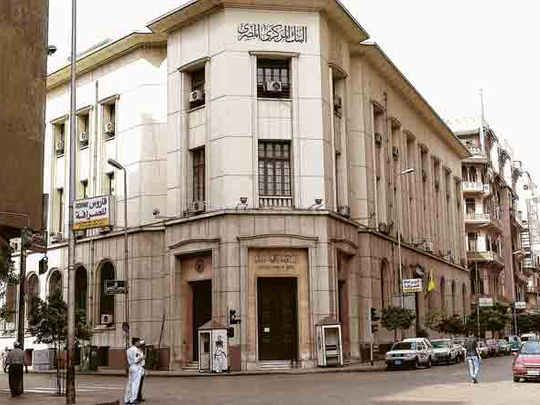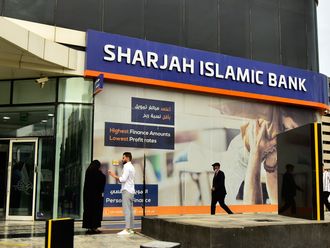
Dubai: Egypt's financial system succesfully withstood the global financial crisis and is poised for strong growth on the back of an economic recovery that began in 2010, according to economists and analysts.
"The Financial Sector Reform Program (2004-08) helped the domestic financial system to weather the global financial crisis," said Sayem Ali, an economist with Standard Chartered Bank (Pakistan) Limited.
"The programme forced banks to strengthen their capital and clean up non-performing loans (NPLs), and led to a consolidation of the banking system," Ali added.
Most analysts agree the majority of Egyptian banks emerged stronger from the crisis with solid asset and margin growth compared to 2009.
Even in the face of the crisis, Egyptian banks' NPL ratios declined and capitalisation levels improved, thanks to the banking sector reforms of previous years.
The Egyptian banking sector remained largely insulated from the global financial crisis according to the annual banking sector report from Pharos Holding.
"The aggregate NPL ratio of banks were down marginally to 14.7 per cent in 2009 from 14.8 per cent in 2008, while banks' risk-weighted capital increased to 15.3 per cent from 14.7 per cent in the same period," said the report.
"Globally the Egyptian banking sector has performed a volte-face, playing a defensive role to providing an array of growth stories," it added.
The strong revival in economic confidence, stable interest rates and strong economic indicators are expected to boost bank lending in the county.
Before lowering interest rates several times, the Central Bank of Egypt (CBE) held them steady throughout 2010. The interest rate in the country has not been lowered since November 2009.
The CBE's Monetary Policy Committee left the overnight deposit rate constant at 8.25 per cent and left the overnight lending rate at 9.75 per cent.
Partially thanks to the CBE's actions, according to a recently released report by CI Capital, loans were up by eight per cent in 2010.
This increase is starting to show its positive effects on the net interest income and fee income generation.
"Proactive policy responses and key reforms drove an economic expansion of 5.1 per cent in the financial year 2010 (ended June 2010)," said Standard Chartered's Ali.
"The government is targetting growth of six per cent in 2011 as trade and investment flows recover. We forecast that the economy will expand by 5.5 per cent in 2011," he added.
Analysts say the banking sector's recovery is driven largely by its solid fundamentals.
According to a report by CI Capital, liquidity remains robust compared to many countries in the Middle East and North Africa region. The loans to deposit ratio of the Egyptian banking system was 52.2 per cent as of June last year, compared to more than 100 per cent in many Gulf countries.
This dynamic has been largely driven by the contribution of core deposits to funding — at 70 per cent. This lies in contrast to the seven per cent from wholesale inter-banking, according to the report by CI Capital.
Inflation to be drag on credit
Loan growth in Egypt last year was largely driven by syndicated loans to the corporate sector.
Analysts expect improving loan demand from small and medium enterprises (SME), and growth opportunities in retail consumer loans.
Mortgage loans are expected to drive credit growth and consequently the interest margins of local banks.
According to a recent report by Alembic HC about 80 per cent of Egyptian population still does not hold bank accounts and such low banking penetration holds huge opportunities for retail banking.
The growing emphasis on SMEs, which account for more than 70 per cent of the country's GDP, is also expected to boost retail commercial lending.
As part of boosting credit to the SME sector, The Central Bank of Egypt (CBE) has exempted banks from the 14 per cent reserve requirement against such loans.
Main driver
Despite the existing healthy environment for the growth of loans, analysts expect rising inflation could remain a drag on loan growth as many see a tightening of interest rates on the horizon.
"Food price inflation will remain the main driver of headline inflation in the next several quarters, in our view," said Jacqueline Madu, an analyst with Credit Suisse.
"It slowed to 17.1 per cent year on the year in November from its recent peak of 22.0 per cent in August.
"We expect headline inflation to rise to 11.2 per cent year-on-ear by end-June 2011, from 10.1 per cent at end-June 2010," she added.
Contained effect
A recent poll of economists by Reuters showed that inflation will accelerate to an average of 11.4 per cent in the 2010-11 financial year, before falling to 10 per cent the year after.
Economists expect rising food prices to push up inflation in this fiscal year, but estimate a contained effect the following year.
The Central Bank of Egypt held its benchmark overnight lending rate steady at 9.75 per cent at its last meeting on December 16, saying inflation was contained but that limited investment and concerns over the global recovery could weigh on the economy.
"Core and non-food inflation dynamics suggest that monetary policy tightening is on the horizon.
"Core inflation, at 7.8 per cent in October was close to the upper end of the Monetary Policy Committee's unofficial comfort zone of six to eight per cent," said Madu.
- 14.7%: aggregate NPL ratio in 2009
- 52.2%: loans to deposit ratio of the industry in June
- 70%: contribution of core deposits to funding












